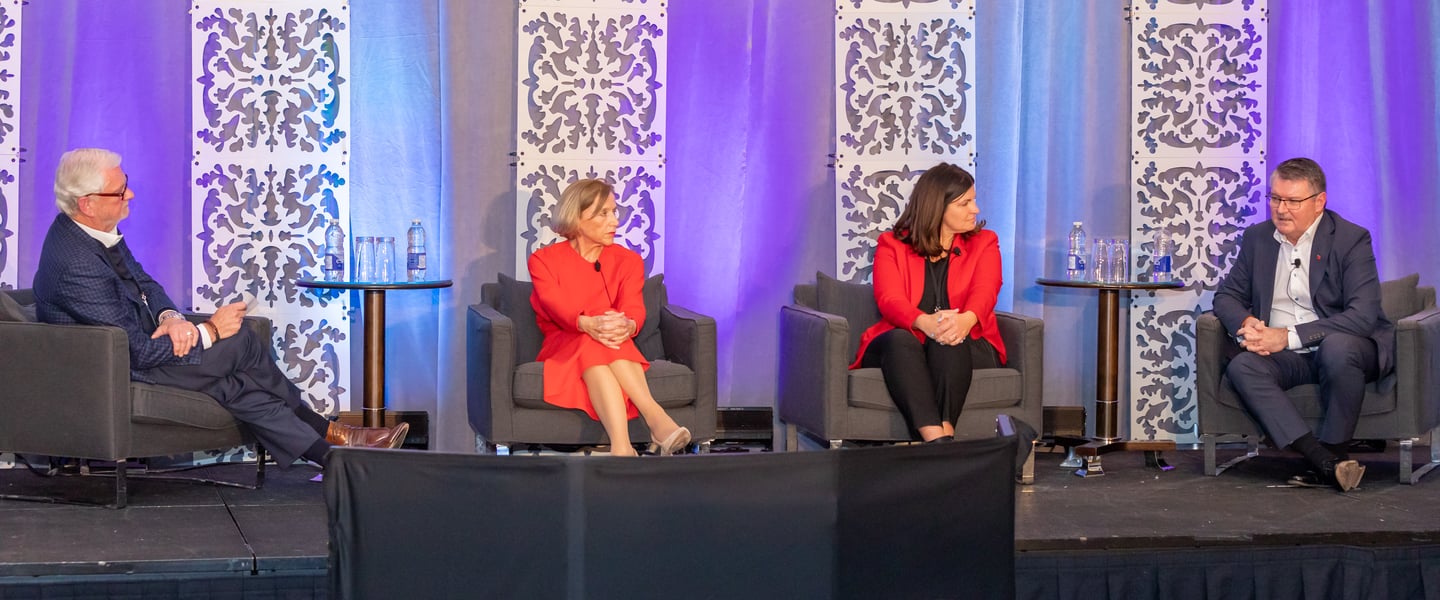How COVID-19 changed supply chain practices: CPG executive panel
The COVID-19 pandemic not only led to massive shifts in consumer behaviour, but also brought about change in the day-to-day flow of goods and forced consumer packaged goods companies to reexamine and manage their supply chains differently.
Nearly three years into the pandemic and the supply chain continues to sputter. However, this has allowed Canadian food and beverage companies to identify areas of opportunity for future growth, including better forecasting, inventory management, automation and increased sourcing of local goods.
“There's a lot of things that we could still build on and I think those are the lessons that are important to take forward,” said Lactalis Canada president and CEO Mark Taylor, during a panel discussion at Canadian Grocer's annual GroceryConnex conference at the Fairmont Royal York in Toronto on Nov. 21.
“So, I think looking at how we forecast our business as an example and improve forecast accuracy is a key focus for us going forward. I think there's opportunities around the way we manage inventory,” he added.
Taylor was joined by P&G’s Geraldine Huse, Wendy Outram of Bimbo Canada, and moderator and FHCP CEO Michael Graydon for a 40-minute session that covered a variety of topics including sustainability, DEI efforts and attracting and retaining talent.
With the disruption caused by the pandemic, Huse said P&G recognized it didn’t have the supply chain in place to deal with the surge in consumer demand and has since invested “billions of dollars” in new capacity to create a more flexible and resilient system in order to "supply what the consumer needs when they need it. Despite all the things that may happen.”
“We're all doing similar work,” agreed Outram, “Increasing the amount of suppliers, increasing that risk mitigation work and really diving deep in our supply chains to understand where there are the key watch-outs and risks. You can't build enough resiliency into the supply chains, but we're certainly building more in than what we did [pre pandemic].”
Though the pandemic was one of the more harrowing experiences the grocery industry has ever faced, the collaborative efforts between suppliers and retailers in dealing with supply chain issues was a bright spot, but Taylor said there’s still room to grow and expressed his support of a grocery code of conduct.
“The code conversations that we've had have been very productive and certainly it’s a privilege for me to be involved in the drafting exercise and I learned a lot from our retail colleagues, some of whom are in the room today and that was massively valuable for me,” he said.



